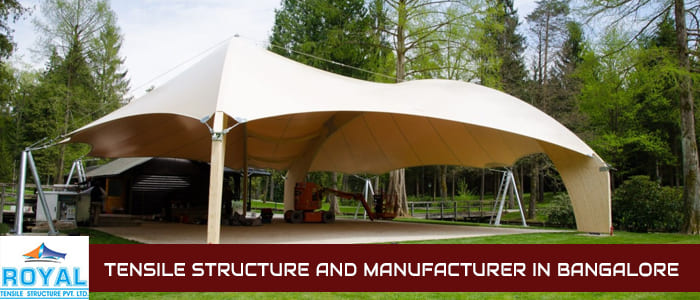Tensile Structure Are a Revolution in Architecture
June 04, 2025 By admin

Tensile structures are a Revolution in Architecture
Today, Tensile Structure are a Revolution in Architecture. A lot of lightweight structures composed of fabric and cables defying gravity are used for artistic appeal.
Here’s how:
Material Efficiency: Tensile structures consume a lot less material, unlike ordinary buildings. Their thin membranes cover long distances, eliminating the need for cumbersome beams and columns. This implies an overall decrease in resource consumption that goes along with lower transport costs and reduced pollution due to construction waste
Natural Light Abundance: Tensile fabrics, which are frequently translucent or transparent allow natural light into the interiors. This helps to minimize reliance on artificial lighting, which decreases energy use and provides a more pleasant and healthier atmosphere.
Enhanced Ventilation: Tensile structures feature curvature and flexibility that allow for natural ventilation. The fabric allows wind to pass through, therefore eliminating the need for energy-intensive mechanical ventilation systems. Furthermore, the Venturi effect can be used for natural ventilation which further saves energy.
Thermal Performance: Some tensile structures use insulated or coated fabrics, thereby increasing thermal efficiency. This minimizes the use of heating and cooling systems, saving energy consumption as well as reducing the carbon footprint.
Adaptability and Reuse: Tensile structures are inherently adaptable. They can be each easily modified, or enlarged to suit evolving needs so their lives are prolonged and the construction of new houses is minimized. Second, the materials are often easily disassembled and reused in other projects to avoid wastage.
Reduced Construction Impact: Tensile structures are extremely lightweight, which reduces interference with construction sites. The amount of excavation and foundation work is reduced thereby minimizing soil disturbance and altering the course of existing ecosystems.
Challenges and Future of Tensile Structures:
Although Tensile Structures hold great promise, they face challenges. The initial costs can be higher than standard constructions because of the specific materials used and the engineering expertise needed. However, more research and development are essential for long-term maintenance and durability.
Although all these challenges may seem daunting, the future of tensile structures in sustainable architecture is promising. Continuous advancements in materials, engineering, and fabrication processes make them more cost-effective and durable. With architects and engineers realizing their potential, we will soon see even more creative and environmentally friendly spaces in our future.



